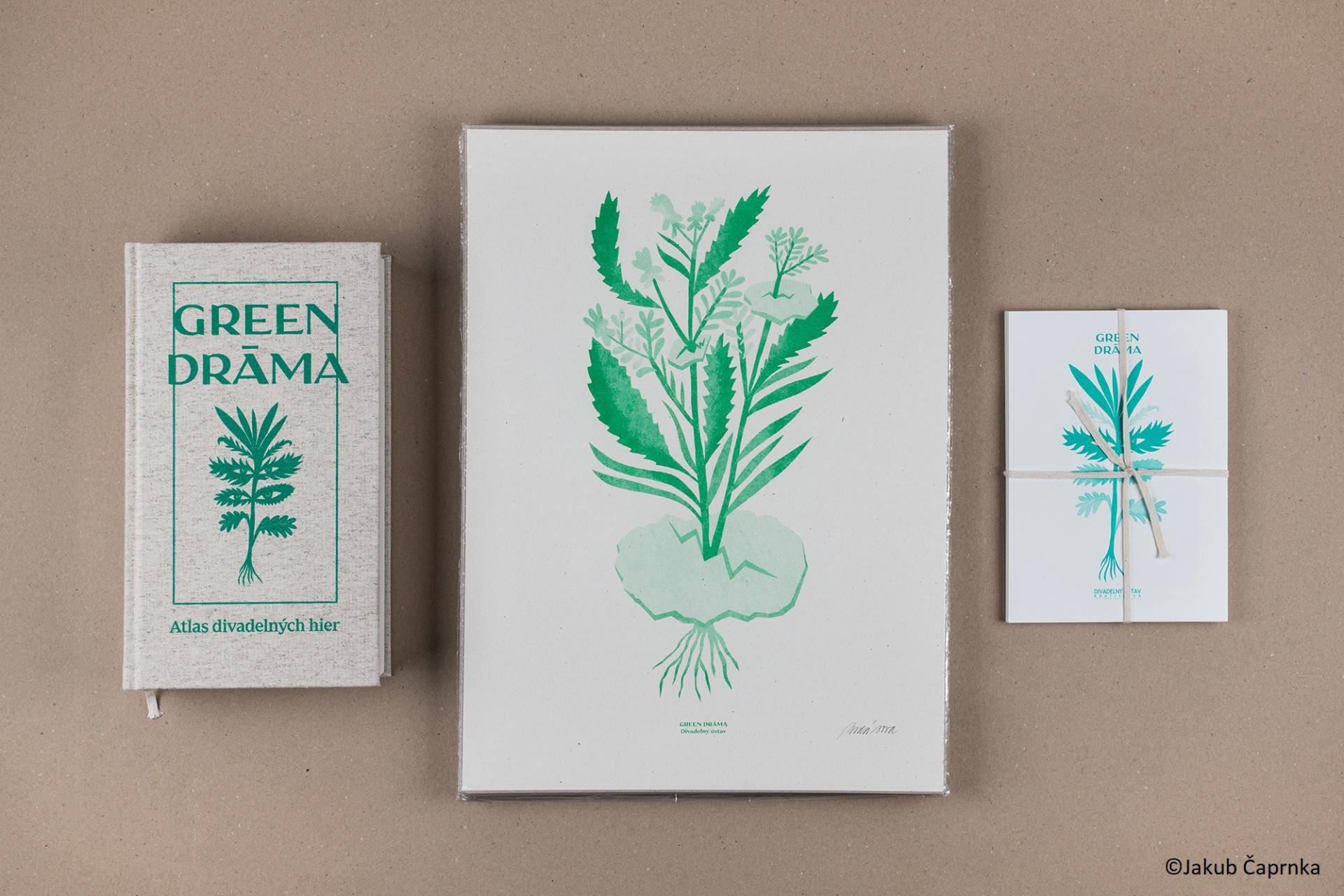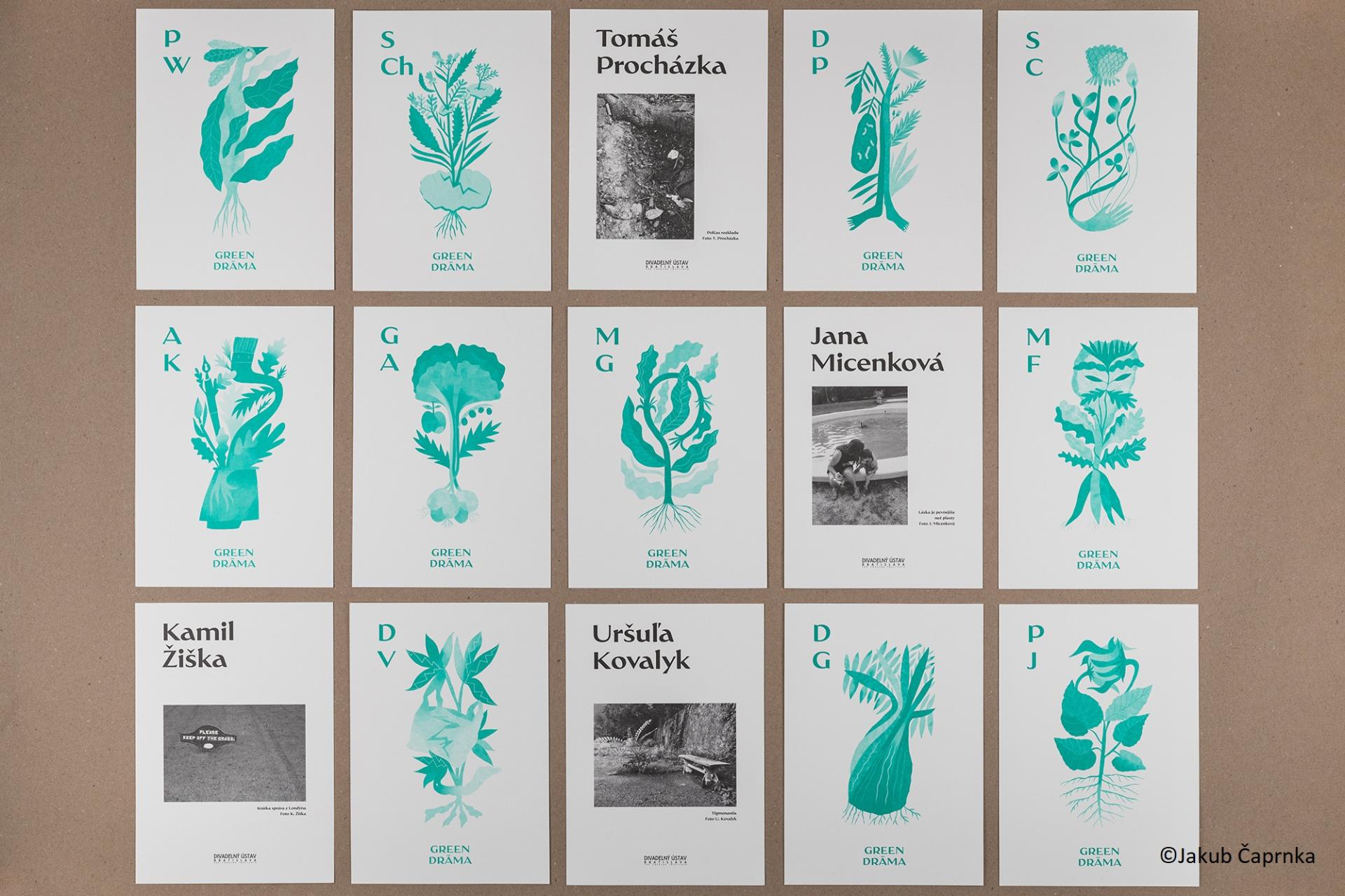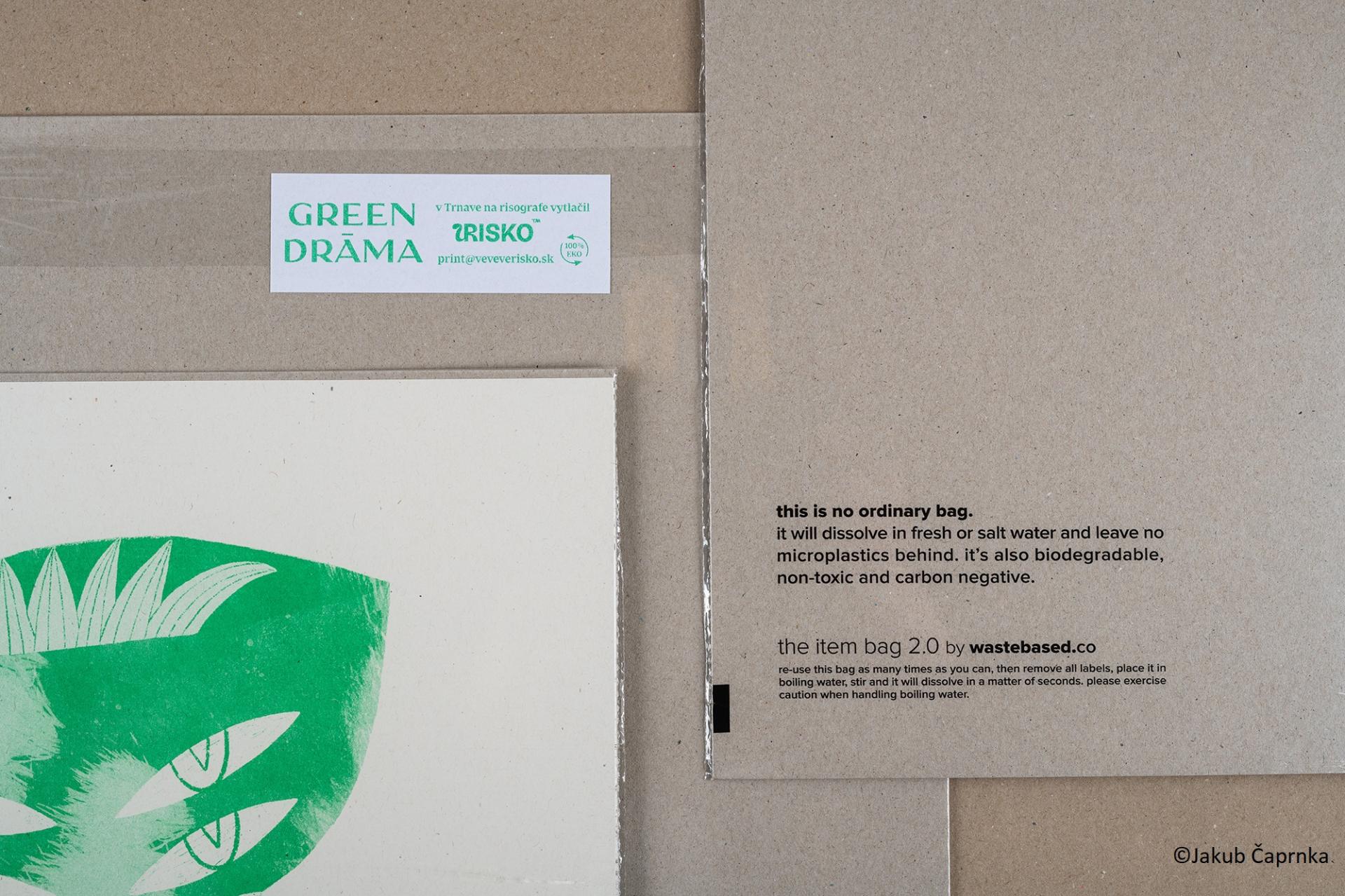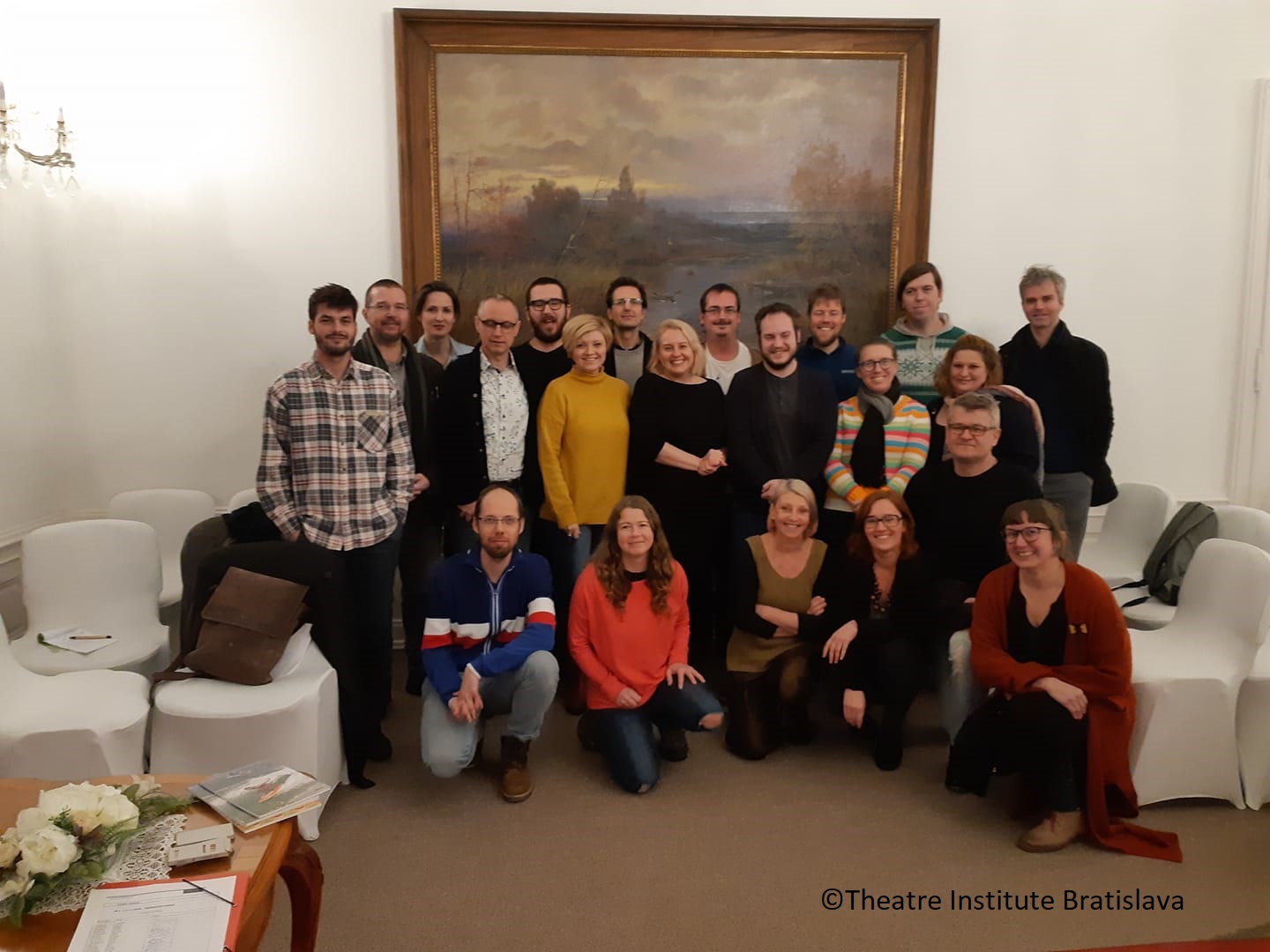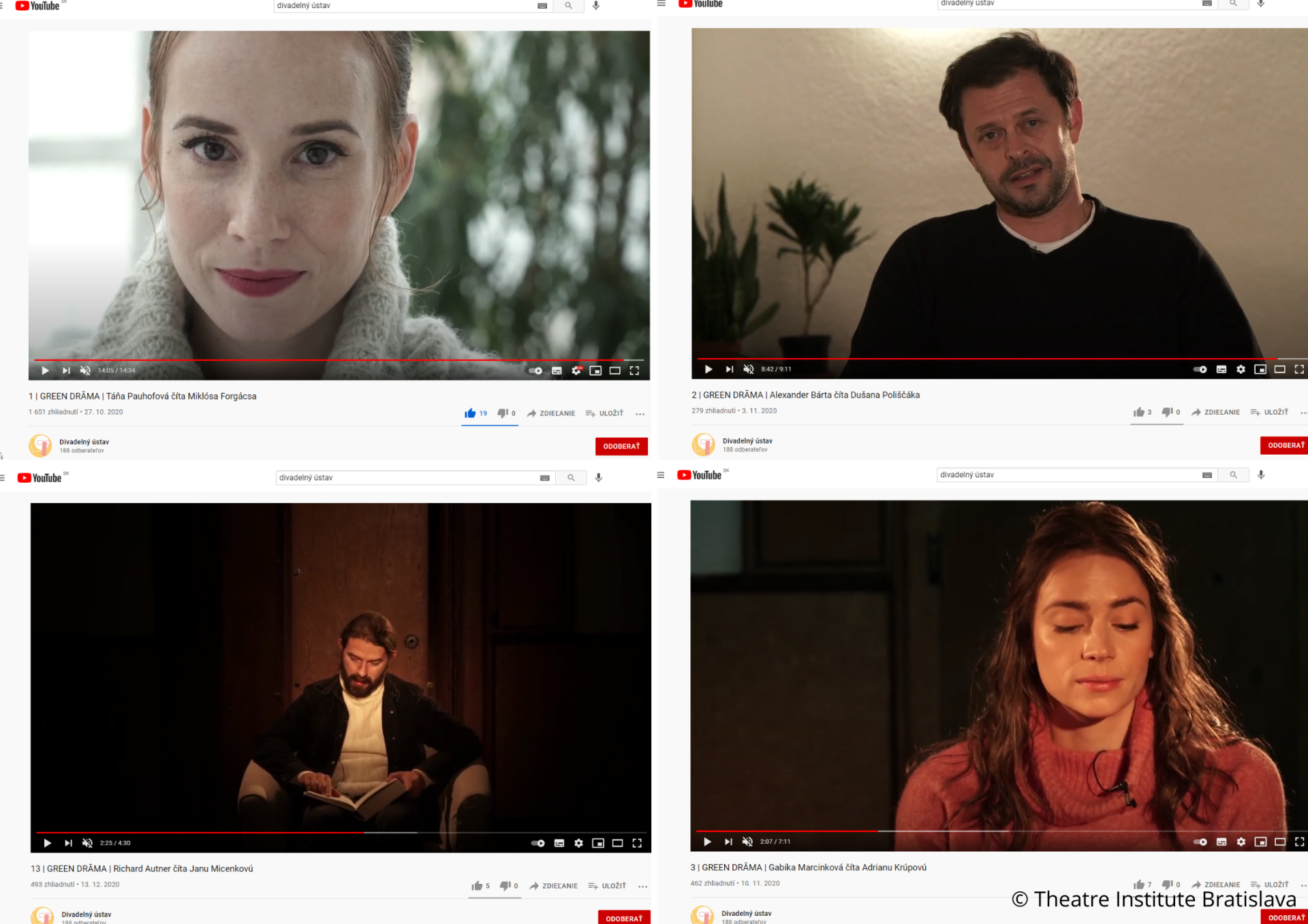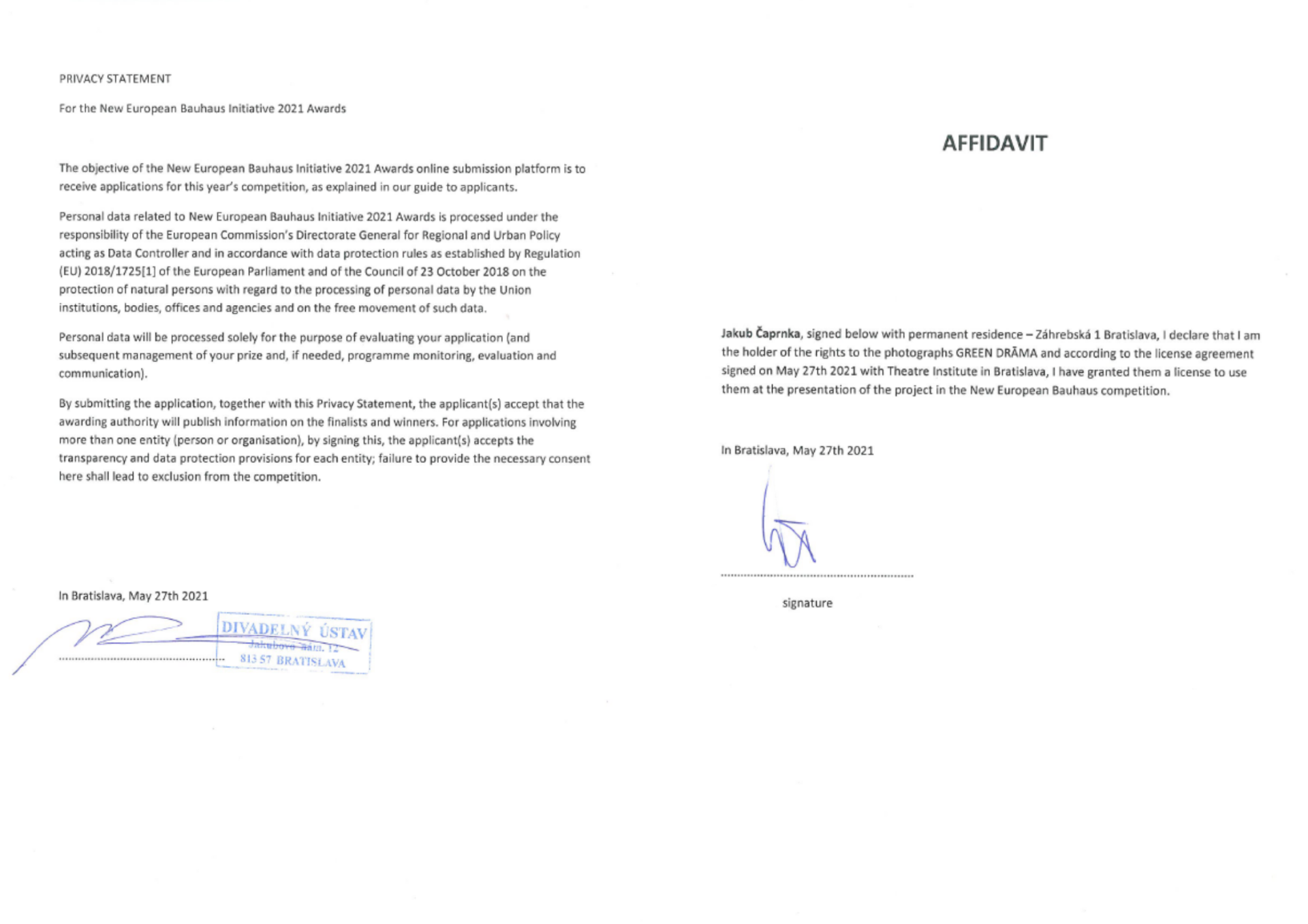GREEN DRĀMA
Basic information
Project Title
Full project title
Category
Project Description
Can we save the world with theatre?
We believe we can. 15 new Slovak eco-plays, an international conference, expert discussions on topics related to climate change, eco-dramaturgy or sustainability issues in theatre, involvement of Slovak actors and actresses in online reading sessions, premieres, and, ultimately, the publication of “An Atlas of Theatre Plays”, a book printed using only environmentally friendly materials.
We are still not ready to stop. So, the question is: will you join us?
Project Region
EU Programme or fund
Description of the project
Summary
In early October 2018, the Theatre Institute published a call for a project designed for Slovak professional playwrights titled GREEN DRĀMA. The objective was to support the creation of new dramatic texts working with such themes as ecology, environmental issues, sustainability, nature protection, among others. The project allowed Slovak playwriting to enter the field of eco-dramaturgy. As a result, playwrights can offer new angles on the seemingly evident history of the relations between man and nature, while reflecting on the devastation of the environment, introducing themes about environmental justice and highlighting, in various ways, the possibilities of human coexistence with all that surrounds us on Earth.
Fifteen Slovak playwrights took part in the project. Included were also lectures for artists, creative meetings of authors and dramaturges, as well as a common teambuilding session, during which the participants could share their primary ideas and discuss further artistic possibilities. Together with experts, they also visited local landfills. In January 2019, the Bratislava-based Studio 12 organized a lecture with a prominent Slovak climatologist and nature philosopher titled Drama: Climate! The first ideas and text drafts were presented on 5 May 2019 in the Slovak National Theatre in Bratislava. During the Nová dráma/New Drama festival, an international conference was held under the title Ecological Questions and Environmental Issues in Theatre and Performance.
The project came to a close with the publication of a collection of plays published in October 2020. By then we were in the middle of a pandemic, so in order to share with our audiences the samples of the plays, we held stage readings online employing the skills of 15 famous Slovak actors and actresses. But the plays did not stay just in Slovakia. They were all translated into English and sent to our theatre partners all over the world.
Key objectives for sustainability
The key objective of the project was to inspire the creation of new dramatic writing with ecological and environmental themes. In addition, the project was aimed at creating the conditions necessary not only for the writing and publishing of new texts, but also for their later staging and production in theatre or radio, both in Slovakia and abroad. It was important to interconnect current topics, the involved authors, and open art institutions in order to allow for the eco-dramas to offer artistic experience to live audiences.
The publication of the collection of plays has allowed anyone from the expert community or lay public to access the texts. Because the plays have been translated into English, they are also available to international theatremakers or readers, completely free of charge - https://www.theatre.sk/slovakdrama/green.html
Another important goal was to try to answer the question how theatre could and should reflect on climate change as well as other related aspects. The theatre’s natural interconnection with a broad audience can help to raise awareness about this issue, which is now relevant on a global scale.
And lastly, a large community of young people (students of primary and secondary schools, as well as universities) became an important group for the project’s aim and activities – several plays were written with this particular community in mind. Therefore, as part of the project’s further development, additional educational workshops are planned specifically for this group.
Key objectives for aesthetics and quality
1. playwrights and project execution
A key part in our project was to contact professional and experienced Slovak playwrights who would closely cooperate with dramaturges from three theatre institutions. This guaranteed the creation of high-quality texts. Many of the playwrights work as directors or dramaturges in theatre and radio, which was another reason why the plays naturally made the transformation from book to stage production.
When creating the book’s design, we focused on two key objectives:
2. using environmentally friendly materials and ecological printing
The book’s cover is made of natural canvas. The colour used is Pantone Green – a colour using only that one shade of green, thus economizing the procedure. We took a similar approach to print the large-scale graphics. We decided to do the printing on a Risograph – a Japanese printer using a special technology. It uses nearly 80% less energy than a laser printer of similar size. The graphics were printed on recycled paper and covered in a starch wrapping used as an ecological alternative to Cellophane.
3. synthesis of the book’s graphic concept by Martin Mistrík and the illustrations by Mirka Rudášová
The subtitle of the book – “An Atlas of Theatre Plays” – became the key to the creation of its graphics. Each author presented in the book is aligned with a fantastic plant, a plant that does not exist in reality, but fits in with the overall idea of the atlas and expresses the author’s personality.
Before the illustrations were created, the visual artists had to study the authors’ personalities, their work, and their ecological contribution. The illustrations are directly based on the authors’ responses to the current environmental themes as well as to the attached photographs of the authors titled “Ecology and I”. Formally, the illustrations are imaginary and contain graphical elements directly related to each author’s main theme and message.
Key objectives for inclusion
All dramatic texts are translated into English and are freely available online at: https://www.theatre.sk/slovakdrama/green.html
Our reaction to the pandemic was to create a series of fifteen creative videos in which Slovak actors and actresses read samples of the texts (without any claim to remuneration). This was an important step that allowed us to present the project not only to the expert public, but also to the media and audiences. The performances by famous performers helped us promote the project’s importance and message to people who normally would not pay so much attention to a project like this.
Another important step was attaching English subtitles to all of the videos to make them accessible also for people outside Slovakia. All videos are available on the Theatre Institute’s YouTube channel: https://youtu.be/vw5lOjjouJc
Results in relation to category
- Support from Ján Budaj, Slovak Minister of the Environment, who stressed the importance of projects like this in one of our videos (https://youtu.be/Re0sVY4JlKU)
- Media support of the state-funded RTVS – Slovak Radio and Television, as well as nationwide dailies and TV stations
- ITI worldwide: https://www.iti-worldwide.org/
- Slovak institutions abroad (Rome, Paris, Prague). Together with the Prague Institute, we created a series of online videos called “A Month with Slovak Drama” in which we presented play samples and interviews with the authors as well as theatre experts in the field of “ecology in contemporary theatre and drama” – https://youtu.be/K2OkZB3-9AQ
- Pace V4: Performing Arts in Central Europe, network
The following personalities expressed their interest in the project and the individual plays: Piotr Olkusz, Foreign Section of Dialog, www.dialog-pismo.pl, Poland; Max Ryynänen, Senior University Lecturer, Aalto University, Finland; Patrice Pavis, theatrologist, France; Asen Terziev, National Theatre Academy and Guild of Theatre Critics, Bulgaria; Ali Mahdi Nuori, UNESCO artist for peace, Sudan; Shimrit Ron, Director of Isra Drama, Israel; Chantal Bilodeau, artistic director of the Arctic Cycle organization, Canada; Vicki Angelacki, Associate Professor of Theatre at the University of Reading, United Kingdom.
- Conference, as part of the Nová dráma/New Drama international festival, Studio 12, Bratislava, 7–8 May 2019
Ecological Questions and Environmental Issues in Theatre and Performance
The international conference introduced the shapes and forms of possible artistic responses to environmental issues. The conference was aimed at discussing how materials, technologies and various principles can be used in theatre and how humans are linked to their environment. Participants included eminent theorists and practitioners in the field, e.g., Carl Lavery, Chantal Bilodeau, Zoe Svendsen, Krõõt Juurak, and Alex Bailey, among others.
How Citizens benefit
Climate change and the related issues are of essential importance in today’s world. That is why it is necessary to talk about them to gradually change people’s thinking and their responsibility for the environment. Theatre, drama, and art in general are some of the ways in which such burning issues can be brought closer to the lay public.
The first step in this process was to motivate the authors – who came from various places in Slovakia and some even from abroad – to get together as part of a single project and exchange their creative and civic opinions. As a result of this exchange, the participants could write dramatic texts whose thematic focus made them truly ground-breaking work in Slovak drama.
The next step was to interconnect the authors with other art institutions, which allowed the newly created eco-plays to find their way to their audiences (premieres in the Andrej Bagar Theatre in Nitra, in the Spiš Theatre, or on Radio Devín).
Just like everyone else, we also had to react to the global pandemic and so the project was presented to the public in online readings staged by famous Slovak actors and actresses.
And, last but not least, we created a platform for an international conference and popularizing discussions with experts from the Slovak Academy of Sciences – including a climatologist and entomologist. In June 2021, we will be organizing a discussion on the topic of “ecological migration” and its connection to eco-drama.
The plan for 2021 and 2022 includes workshops for students, for example, in the Andrej Bagar Theatre in Nitra, or in Studio 12 in Bratislava.
Innovative character
GREEN DRĀMA is a unique project because it initiated a nationwide creation of theatre texts with ecological and environmental themes to react to the current challenges related to climate change. It is a multimedia and interdisciplinary project which also supports sustainability goals. Owing to the project, we could create a platform interconnecting not just individual artistic elements – authors, dramaturges, theatrologists, and directors – but also audiences and researchers in other than theatre-related disciplines. It offers many ways how to view and respond to the broad spectrum of current “green” themes – topics that should be talked about and presented to the general public.
Our innovative contribution also relied on focusing on environmental sustainability when selecting and printing the materials for the collection. Using such materials should find preference in all activities – but this has to be extensively communicated in order to inform people about such possibilities. The book’s cover is made from natural canvas and we used Pantone Green as a shade of the natural green colour. The large-scale printing of graphics was done using a Risograph. Risograph is a Japanese printer using a specific printing technology. The matrixes used by the Risograph to print individual colours are made from banana peels and the printing colours are made from soy or rice oil. Riso uses nearly 80% less energy than a laser printing of similar size. The graphics were printed on recycled paper and covered in a starch wrapping that we use as an ecological alternative to Cellophane. Whenever the wrapping is no longer useful it can be disposed of by dissolving it in hot water.

